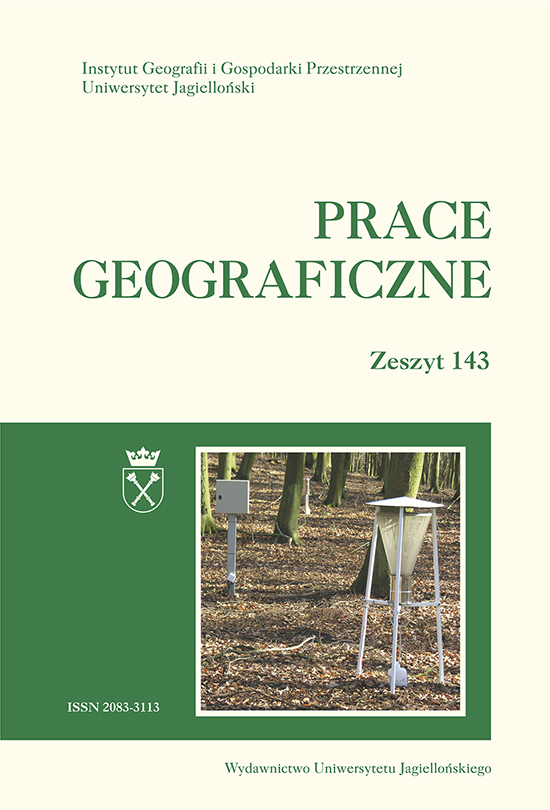Variability of throughfall and stemflow deposition in pine and beech stands (Czarne Lake catchment, Gardno Lake catchment on Wolin Island)
Variability of throughfall and stemflow deposition in pine and beech stands (Czarne Lake catchment, Gardno Lake catchment on Wolin Island)
Author(s): Robert Kruszyk, Andrzej Kostrzewski, Jacek TylkowskiSubject(s): Geography, Regional studies
Published by: Wydawnictwo Uniwersytetu Jagiellońskiego
Keywords: forest ecosystem; throughfall; stemflow; ion deposition; canopy budget model; Scots pine; European beech
Summary/Abstract: The research sought to determine the range of conversion of the chemical composition of precipitation in a beech stand located in the Gardno Lake catchment ( Wolin Island ) and a pine stand in the Czarne Lake catchment ( Upper Parsęta catchment, West Pomerania Province ). The presented results cover three hydrological years : 2012, 2013 and 2014. The research focused on the chemical composition of bulk precipitation ( in the open ), throughfall and stemflow ( in a forest ). The obtained results confirm that after precipitation has had contact with plant surfaces there is an increase in its mineral content. This is due to the process of enrichment of throughfall and stemflow with elements leached out of needles and leaves ( K +, Mg 2+ ) and coming from dry deposition ( NH 4 +, Cl –, Na +, Mg 2+, SO 4 2– , NO 3 – ) washed out from plant surfaces. The research, based on the canopy budget model, indicates that in the case of potassium, its load leached out of needles and leaves accounted for 75.6 % and 73 %, respectively, of its total deposition on the forest floor. Calcium leaching was not detected in either of the two stands. In comparison with potassium, the range of magnesium leaching was smaller and amounted to 34 % under beech and 26.5 % under pine. As to loads of potassium and magnesium in the beech stand, they were more than twice as large as the ones observed in the pine stand. In spite of the fact that coniferous trees capture aerosols present in the air much more effectively, a higher mineral content was recorded in the beech stand. It applies primarily to ions of marine origin ( Cl –, SO 42– , Na +, Mg 2+ ). It was only when ammonium ions originated from agriculture that their higher concentrations and loads were found in the pine stand.
Journal: Prace Geograficzne
- Issue Year: 2015
- Issue No: 143
- Page Range: 85-102
- Page Count: 18
- Language: English

